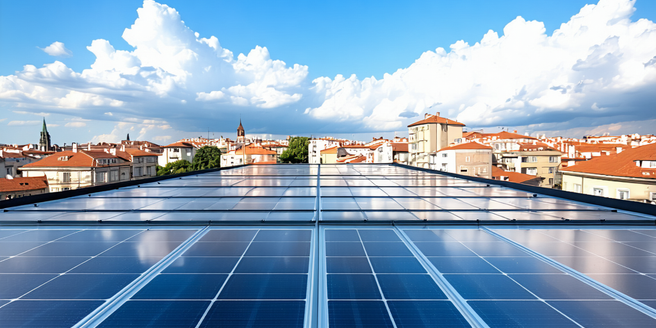
Introduction to Urbanization and Climate Change
Urbanization refers to the expansion of cities as populations increase, leading to significant land use changes. These transformations have profound impacts on climate systems at both local and global scales. The introduction of concrete and asphalt, alongside the reduction of vegetation, alters surface energy balances, influencing weather patterns. Cities often experience higher temperatures than their rural surroundings due to these changes, a phenomenon known as the urban heat island effect. Additionally, urbanization contributes to increased greenhouse gas emissions, exacerbating climate change. As cities grow, the demand for energy and transportation rises, leading to more emissions. Understanding these dynamics is crucial to developing strategies to mitigate the impacts of urbanization on climate, thereby ensuring a sustainable future.
How Urban Heat Islands Influence Local Temperatures
Urban heat islands (UHIs) are urban areas that experience higher temperatures than their rural counterparts. This effect is caused by the concentration of buildings, roads, and other infrastructure that absorb and re-emit the sun’s heat more than natural landscapes. The consequence is that UHI areas can be several degrees warmer, especially during the night, affecting local weather patterns. This can lead to increased energy consumption for cooling, and heightened discomfort during heatwaves. Additionally, UHIs contribute to worsening air quality and can exacerbate the impact of heat-related illnesses. By understanding how UHIs affect local temperatures, we can implement urban planning strategies such as increasing green spaces and using reflective materials to reduce their impact.
The Role of Air Pollution in Cloud Formation and Precipitation
Air pollution in urban areas can significantly influence cloud formation and precipitation. Particulate matter, such as dust and soot from industrial and vehicular emissions, acts as cloud condensation nuclei. These particles provide surfaces on which water vapor condenses, forming clouds. While this process can increase cloudiness and precipitation, it can also alter precipitation patterns, potentially leading to more intense rainfall events in urban areas. Additionally, some pollutants may lead to ‘dirty’ clouds that reflect sunlight away from Earth, affecting local temperatures and weather patterns. Understanding these interactions is critical as they can have considerable implications for water resources, agriculture, and urban planning.
Impact of Urban Infrastructure on Wind Patterns
Urban infrastructure, characterized by high-rise buildings and sprawling residential areas, can significantly alter wind patterns. The layout and height of buildings can block or redirect wind flow, creating areas of turbulence and impacting ventilation in city environments. Tall structures can deflect wind upward or create wind shadows on the leeward side, reducing wind speed. This modification affects air quality by preventing pollutants from dispersing. Additionally, altered wind patterns can affect local weather conditions and living comfort for urban residents. Understanding the impact of urban design on wind patterns is crucial in planning cities that effectively manage air quality and maintain pleasant climatic conditions.
Urbanization and Increased Frequency of Extreme Weather Events
Urbanization has been linked to an increased frequency and intensity of extreme weather events, such as heatwaves, storms, and heavy rainfall. These events are exacerbated by the changes urban areas impose on natural environments. High levels of impervious surfaces, like asphalt and concrete, prevent water absorption, increasing flood risks during heavy rains. Moreover, cities are often heat sinks, making heatwaves more severe and prolonged. Infrastructure expansion can also interfere with natural wind flows, increasing the potential for devastating storms. As urban areas expand, understanding the influence of urbanization on extreme weather becomes vital for municipal planning and risk management.
Strategies for Mitigating Urbanization’s Adverse Weather Effects
Addressing the adverse weather effects of urbanization requires comprehensive strategies focused on sustainable development. Urban planners can design cities to enhance natural ventilation and reduce the urban heat island effect by increasing green spaces and utilizing reflective building materials. Implementing green roofs and walls can aid in cooling and improve air quality. Enhancing public transportation and promoting low-emission vehicles can reduce air pollution. Furthermore, creating efficient drainage systems can mitigate flood risks from stormwater. Implementing these strategies requires collaboration between policymakers, urban developers, and communities to ensure cities are resilient to changing weather patterns and contribute to broader climate change mitigation goals.
